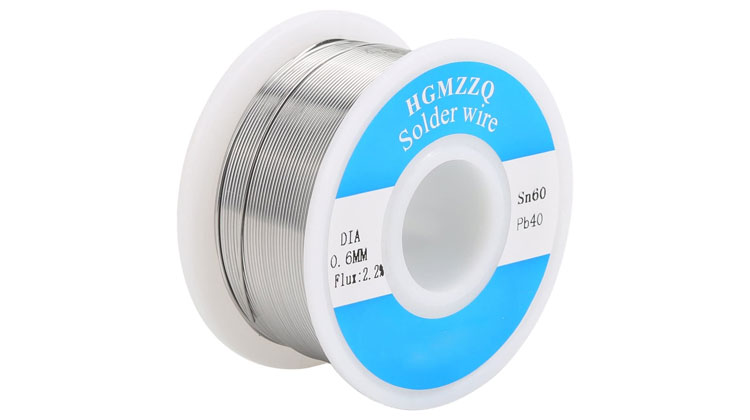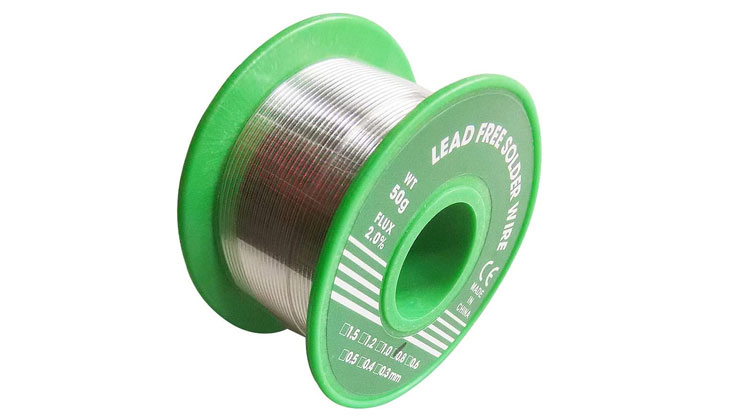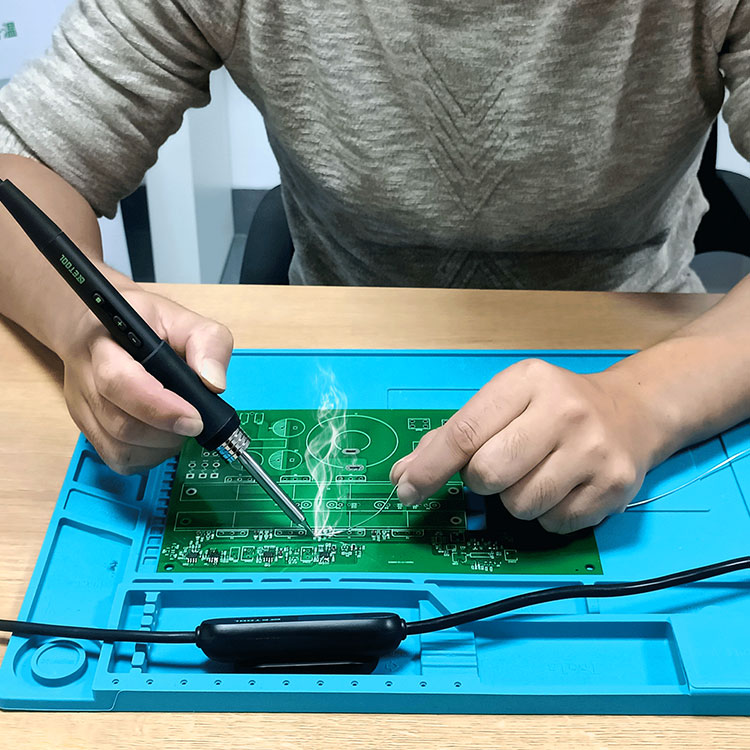Solder is a metal alloy that is used to join two or more metal components together. Solder melts at a relatively low temperature, typically between 183 and 190 degrees Celsius (361 and 374 degrees Fahrenheit), depending on the solder used. The melting point of solder is lower than the melting point of the metals being joined, which allows the solder to flow and fill the gap between the components, creating a strong and reliable joint.
There are many different types of solder, and each type has a different melting point. The most commonly used solder is tin-lead solder, a mixture of tin and lead in varying proportions. Tin-lead solder typically melts at a temperature of 183 to 190 degrees Celsius (361 to 374 degrees Fahrenheit), depending on the exact composition of the solder.

Other types of solder, such as lead-free solder, may have different melting points. Lead-free solder is a mixture of metals that do not contain lead, such as copper, silver, and zinc. Lead-free solder typically melts at a higher temperature than tin-lead solder, typically between 217 and 220 degrees Celsius (423 and 428 degrees Fahrenheit), depending on the exact composition of the solder.

In addition to the type of solder being used, the melting point of solder can also be affected by external factors, such as the presence of impurities or contaminants or the temperature of the metals being joined. Impurities or contaminants in the solder can lower its melting point, while the temperature of the metals being joined can raise the melting point of the solder, making it more difficult to melt. To ensure that the solder melts at the correct temperature, it's important to use high-quality solder free of impurities or contaminants and preheat the metals being joined to the appropriate temperature.
In conclusion, the melting point of solder is typically between 183 and 190 degrees Celsius (361 and 374 degrees Fahrenheit) for tin-lead solder and between 217 and 220 degrees Celsius (423 and 428 degrees Fahrenheit) for lead-free solder. The melting point of solder can be affected by the type of solder being used, the presence of impurities or contaminants, and the temperature of the metals being joined. To ensure that the solder melts at the correct temperature, it's important to use high-quality solder and to preheat the metals being joined to the appropriate temperature.
In addition to the melting point of solder, several other factors are important to consider when working with solder. One of these factors is the type of soldering process being used. Different soldering processes have different requirements and limitations, and the choice of soldering process can affect the melting point of the solder.

For example, one common soldering process is wave soldering, which involves passing the metals joined over a molten solder wave. In wave soldering, the temperature of the molten solder is typically between 183 and 190 degrees Celsius (361 and 374 degrees Fahrenheit), to match the melting point of tin-lead solder. However, if lead-free solder is used, the temperature of the molten solder may need to be adjusted to match the higher melting point of the lead-free solder.
Another common soldering process is reflow soldering, which involves heating the metals being joined with a hot air gun or infrared lamp and then melting the solder onto the surfaces with the heat from the air or lamp. In reflow soldering, the temperature of the air or lamp is typically between 217 and 220 degrees Celsius (423 and 428 degrees Fahrenheit), to match the melting point of lead-free solder. However, if tin-lead solder is used, the temperature of the air or lamp may need to be adjusted to match the lower melting point of the tin-lead solder.
In conclusion, the melting point of solder is an important factor to consider when working with solder. Different soldering processes have different requirements and limitations concerning the melting point of the solder. To ensure that the solder melts at the correct temperature, it's important to choose the appropriate soldering process and solder type and adjust the soldering process's temperature as needed. By following these guidelines, you can help to ensure that your soldering work is safe and effective.
Contact: Mr. Li
Phone: (0086) 138 24254 321
E-mail: atetool@atetool.com.cn
Add: 5F, 1-2# Building, Tongfuyu Industrial Zone, Aiqun Rd, Shiyan Subdistrict, Bao'an, Shenzhen, 518108, China